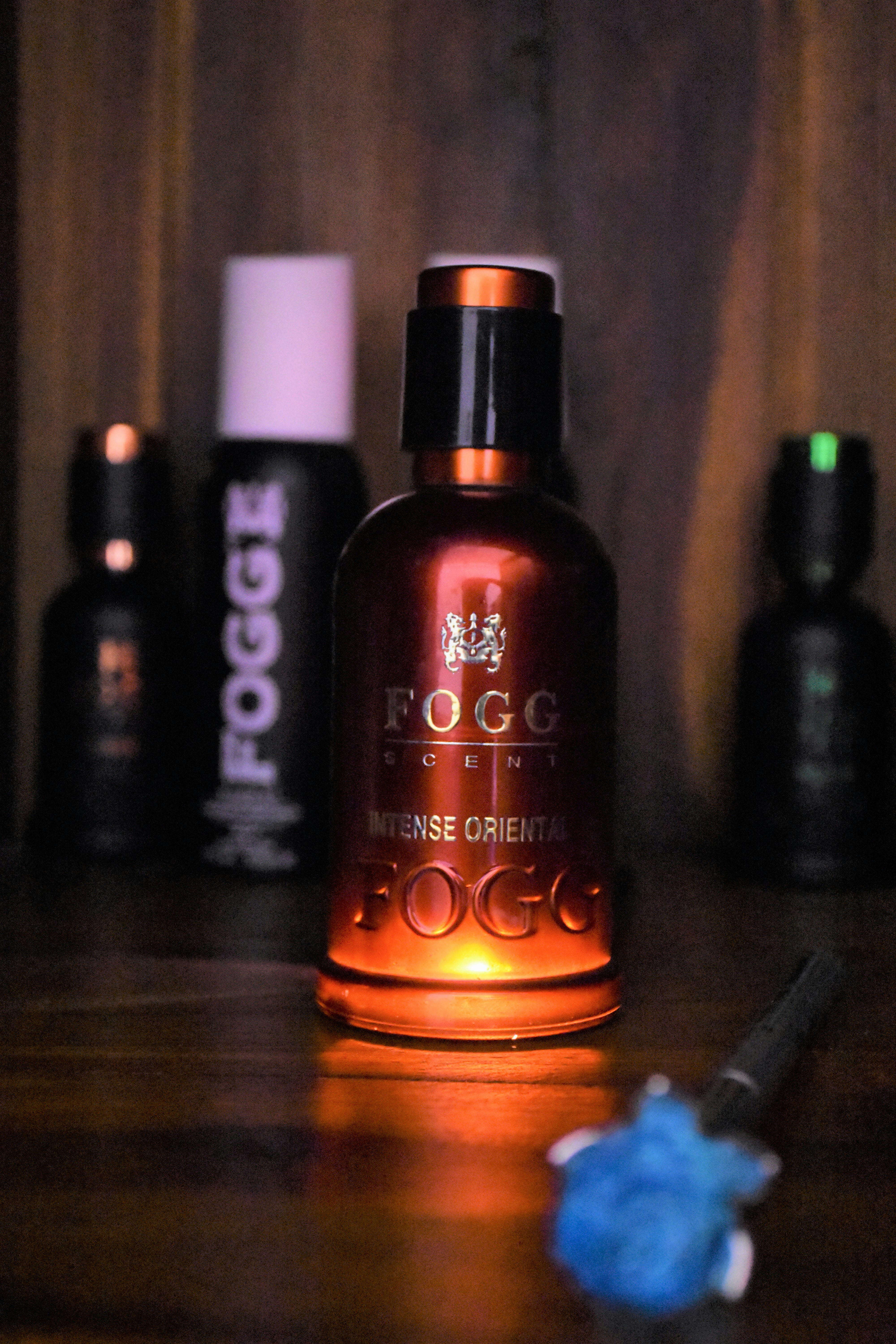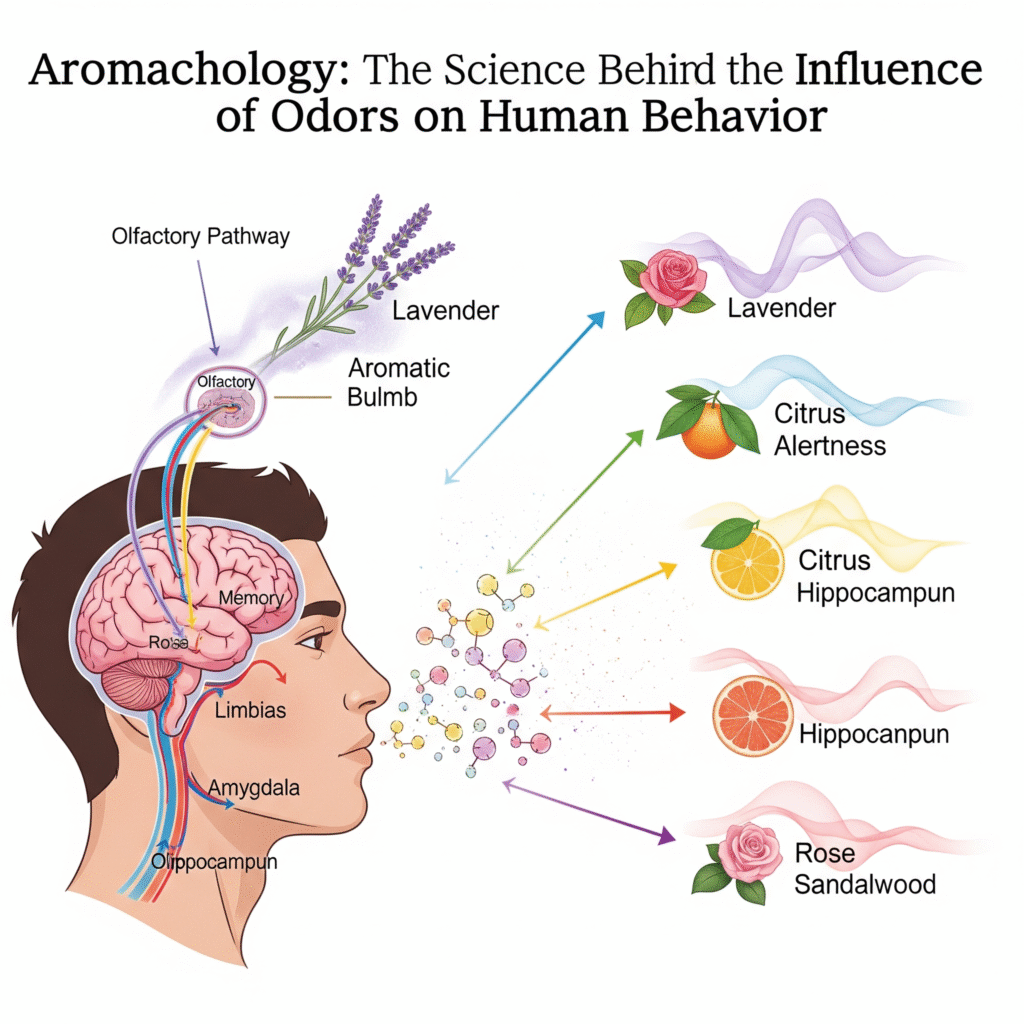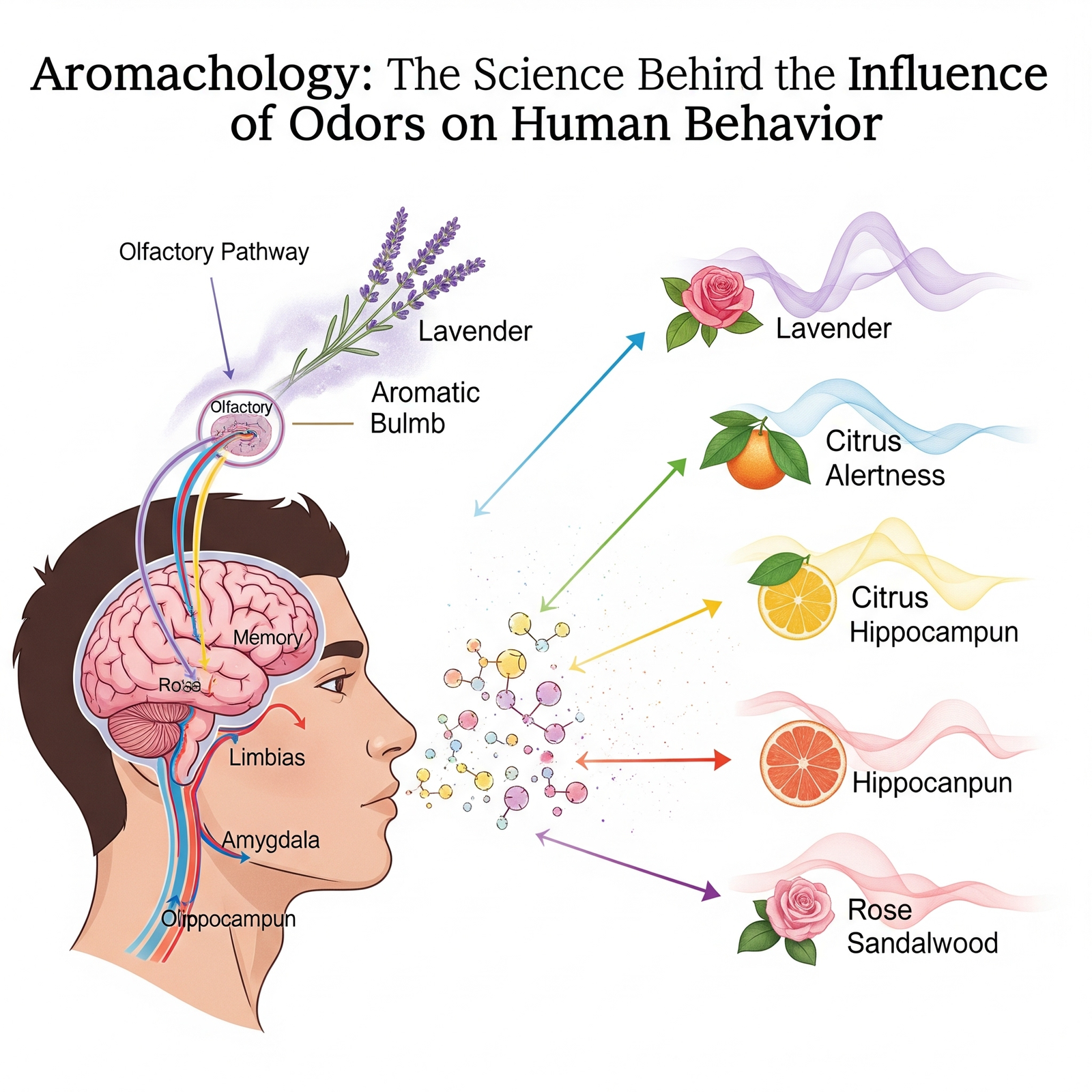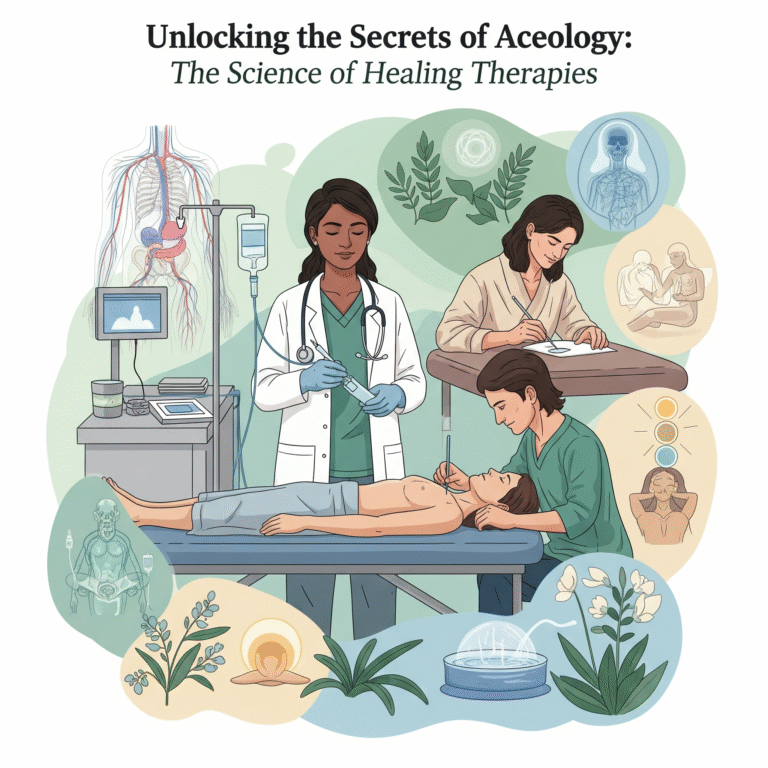
Introduction to Aromachology
Aromachology is a multidisciplinary field that investigates the effects of odors and scents on human behavior and emotional responses. By understanding how the brain processes different aromas, researchers in this domain shed light on the intricate relationship between scent and psychological well-being. This field has grown significantly and now plays a crucial role in various sectors including psychology, marketing, and holistic health.
The origins of aromachology can be traced back to ancient civilizations, where various cultures recognized the therapeutic potential of specific scents. Many ancient practices, from the use of incense in religious ceremonies to the application of essential oils for therapeutic purposes, highlight an early understanding of the impact that aromas can have on human emotions and behavior. However, the term “aromachology” itself was first coined in the late 20th century, reflecting a more scientific approach to understanding the influence of scents on individuals’ psychological states.
As research in this field expanded, scientists began to isolate the effects of specific odors on emotional states. Studies revealed that certain scents, such as lavender, can have calming effects, while citrus fragrances can uplift mood and stimulate alertness. This evidence reinforced the significance of aromachology as a growing area of interest not only for researchers but also for marketers and holistic health practitioners. By employing scents strategically, businesses can create environments that enhance customer experience, while holistic health practitioners can utilize the therapeutic properties of aromas to promote mental and emotional well-being.

Today, aromachology represents a unique intersection of sensory science and human psychology, offering valuable insights into how our interactions with various scents can shape our emotional experiences and behavior across multiple contexts.
The Science of Smell: How Olfactory Perception Works
The science of smell, formally known as olfaction, is a complex biological process that involves multiple anatomical structures and functions. At the core of this process is the olfactory system, which is primarily responsible for the detection and perception of odors. The journey of a scent begins as volatile molecules enter the nasal cavity, where they bind to specialized sensory neurons located in the olfactory epithelium—a thin layer of tissue situated high in the nasal cavity.
Table 1: Key Brain Structures Involved in Olfactory Processing
| Brain Region | Function in Olfactory Processing |
|---|---|
| Olfactory Epithelium | Detects odor molecules and initiates olfactory signaling |
| Olfactory Bulb | Organizes olfactory input; transmits signals to other brain regions |
| Limbic System | Processes emotional and memory-related responses to odors |
| Amygdala | Links scents to emotional reactions, especially fear and pleasure |
| Hippocampus | Associates odors with memories |
| Orbitofrontal Cortex | Interprets and identifies smells; integrates with taste and decision-making |
These sensory neurons possess olfactory receptors, which are proteins that detect specific odorant molecules. Each olfactory receptor is tuned to recognize certain chemical structures. When odorant molecules bind to these receptors, they initiate a series of biochemical reactions that convert the chemical signal from the odor into an electrical signal. This process is vital as it allows the brain to interpret the vast array of smells encountered daily.
Once activated, the olfactory sensory neurons send their signals to the olfactory bulb, a structure located at the base of the brain. Here, the information is organized and passed on to other areas of the brain, including the limbic system, which plays a crucial role in emotional processing and memory. It is through this connection that different scents can evoke powerful emotional responses, often linked to past experiences or memories. For instance, the smell of vanilla may remind someone of childhood baking, triggering feelings of warmth and nostalgia.
Furthermore, it is important to note that the perception of scent is influenced by a variety of factors, including individual genetic predispositions and environmental contexts. As such, two individuals may perceive the same odor in distinctly different ways. This highlights the subjective nature of olfactory perception and its profound impact on human behavior and emotional states.
Emotional Responses to Odors: A Psychological Perspective
The intricate relationship between odors and human emotions has long captivated researchers and psychologists alike. Numerous empirical studies demonstrate that specific scents can evoke distinct feelings and memories, showcasing the profound influence of aromas on human behavior. Fundamental to this phenomenon is the fact that the olfactory system is closely intertwined with the limbic system, which governs emotional responses. This anatomical connection explains why individuals often have powerful emotional reactions to particular smells, often triggering nostalgia or comfort.
Table 2: Common Scents and Their Documented Psychological Effects
| Scent | Primary Psychological Effect | Common Use Case |
|---|---|---|
| Lavender | Calming, reduces anxiety | Sleep aids, spa therapy, stress relief |
| Citrus | Energizing, improves alertness | Office settings, retail, fitness environments |
| Peppermint | Enhances focus, relieves fatigue | Work productivity, driving, studying |
| Vanilla | Comforting, nostalgic | Home fragrance, cafes, relaxation spaces |
| Rose | Uplifting, romantic | Personal care, therapeutic massage |
For instance, the scent of freshly baked cookies may elicit warm childhood memories, while the aroma of pine may remind someone of winter holidays spent with family. Studies indicate that these emotional connections are not merely coincidental, as the brain processes olfactory information more rapidly than visual or auditory information, leading to immediate emotional reactions. Additionally, the personal nature of scent associations highlights the subjective experience each individual has with different odors, which can vary widely based on cultural background and personal history.
Theories in psychology, such as the Classic Conditioning Theory proposed by Ivan Pavlov, have been pivotal in understanding how scents can evoke emotions. Classical conditioning suggests that through repetitive associations, certain odors become linked to specific emotional responses. For example, if an individual consistently associates lavender with relaxation due to past experiences, the mere presence of that scent may trigger relaxation responses in the future. This personalized dynamics unfolds further with the understanding of diverse emotional responses, as the same odor may elicit joy for one person while provoking sadness in another. This variance emphasizes the complexity of olfactory stimuli and their intricate emotional landscapes.
In conclusion, the emotional responses elicited by odors highlight the significant interplay between scent and psychology. The continual study of aromas offers valuable insights into human behavior and emotional responses, paving the way for enriched mental health practices and therapeutic interventions.
Aromachology in Marketing: The Power of Scent in Consumer Behavior
Aromachology, the study of how scents affect human emotions and behavior, is becoming increasingly significant in marketing strategies across various industries. Businesses are leveraging understanding of scent to enhance customer experiences and influence purchasing decisions effectively. The essence of aromachology lies in its ability to evoke emotional responses, which in turn can drive consumer behavior. By carefully selecting the right fragrances, companies create an atmosphere that resonates with their target demographic, leading to an improved brand perception and increased sales.
Table 3: Aromachology in Marketing – Strategic Scent Applications
| Industry | Target Emotional Response | Scent Strategy Used | Example |
|---|---|---|---|
| Retail (Fashion) | Brand identity, loyalty | Signature fragrances | Abercrombie & Fitch |
| Hospitality (Hotels) | Relaxation, luxury | Calming lavender or sandalwood | Westin Hotels “White Tea” scent |
| Food & Beverage | Appetite stimulation | Vanilla, cinnamon, fresh bread | Bakery entrances, cafés |
| Fitness & Wellness | Energy, clarity | Citrus, eucalyptus, peppermint | Spas, yoga studios |
| Automotive | Cleanliness, newness | “New car” scent, leather notes | Car dealerships |
One notable example of successful scent marketing is that of certain retail stores, such as Abercrombie & Fitch, which famously uses a signature fragrance that permeates its premises. This strong olfactory presence not only creates an alluring shop environment but also fosters consumer loyalty. Research indicates that when shoppers are exposed to pleasant aromas, their shopping time often increases, which correlates with higher spend thresholds. Such case studies highlight how scent serves as a tool for creating lasting impressions and enhancing overall customer experiences.
Moreover, the psychological effects of specific scents play a vital role in this dynamic. For instance, scents like vanilla and lavender have been proven to elicit relaxation and comfort, making them ideal for businesses in the wellness and hospitality sectors. Conversely, citrus scents, associated with energy and freshness, can be utilized in contexts that seek to invigorate consumers, such as gyms or health food stores. This strategic application of scent in branding not only enhances recognition but can also forge an emotional connection with customers.
As brands continue to explore the full potential of aromachology, the implications for consumer behavior remain profound. Establishing a scent identity becomes an essential facet of marketing, allowing businesses to effectively differentiate themselves in an increasingly competitive landscape. From enhancing brand loyalty to influencing purchasing decisions, the integration of scent in marketing remains a powerful tactic, underscoring the importance of understanding human psychology in commerce.
Therapeutic Applications of Aromachology
Aromachology, the study of the relationship between aromas and human behavior, has found valuable applications in therapeutic settings. One of the primary areas where aromachology has made a significant impact is stress relief. Various scents, particularly those derived from essential oils, are believed to create calming effects, thereby reducing anxiety levels. Lavender, for instance, is often used in relaxation techniques for its proven ability to diminish stress responses and foster a sense of tranquility.
Table 4: Aromatherapy Techniques and Their Benefits
| Technique | How It’s Used | Primary Benefits |
|---|---|---|
| Inhalation | Diffusers, sprays, steam inhalation | Mood regulation, stress relief, energy boost |
| Massage Therapy | Essential oils blended with carrier oils | Relaxation, pain relief, muscle recovery |
| Topical Use | Applied to pulse points or skin | Targeted relief (e.g., headaches, tension) |
| Bathing | Oil-infused bath salts or bubble baths | Full-body relaxation, emotional balance |
| Aromatherapy Jewelry | Oils absorbed in pendants or bracelets | On-the-go mood enhancement, anxiety control |
In addition to stress relief, aromachology plays a critical role in mood enhancement. Scents such as citrus or peppermint have been discovered to uplift spirits and stimulate energy levels. By harnessing the therapeutic properties of these odors, individuals can enhance their emotional state, leading to an overall sense of well-being. Research indicates that the inhalation of pleasant scents can influence neurotransmitter levels in the brain, thereby positively affecting mood and cognitive functions.
Aromatherapy, a practice closely aligned with aromachology, uses essential oils extracted from plants to promote physical and emotional health. It encompasses various methods, including inhalation, massage, and topical application. Each oil possesses distinct properties; for instance, chamomile is recognized for its calming effects, while eucalyptus is valued for its invigorating qualities. The versatility of essential oils means that they can be tailored to meet individual therapeutic needs, providing a personalized approach to health and wellness.
Furthermore, integrating aromachology into daily routines can lead to improved cognitive function and even enhanced physical health. Studies show that certain scents may improve focus and memory retention, making them useful tools in both personal and professional environments. As awareness of the benefits of aromachology continues to grow, it is likely that more individuals will adopt these practices, contributing to their overall health and mental well-being.
Cultural and Social Influences on Olfactory Perception
Olfactory perception is profoundly shaped by cultural backgrounds and social contexts, affecting how individuals experience and react to odors. Different cultures possess unique scent repertoires, often leading to varying preferences and aversions to specific fragrances. For instance, while certain scents like sandalwood or jasmine may be considered pleasant in some regions, they can evoke negative responses in others, illustrating the complexity of scent perception across diverse societies. This can largely be attributed to cultural associations and meanings that particular scents hold within each society.
Table 5: Cultural Preferences in Scent Perception
| Region/Culture | Preferred Scents | Cultural Significance |
|---|---|---|
| South Asia | Sandalwood, jasmine | Spirituality, purity, ceremonial use |
| Middle East | Oud, frankincense | Luxury, tradition, hospitality |
| East Asia | Green tea, cherry blossom | Tranquility, nature, harmony |
| Western Europe | Lavender, rose | Calmness, romance, nostalgia |
| North America | Vanilla, citrus | Comfort, energy, cleanliness |
Moreover, socialization plays a critical role in shaping individual responses to odors. As individuals grow and interact with their immediate surroundings, they learn to associate certain scents with specific contexts, environments, or experiences. For example, in a certain culture, the aroma of freshly baked bread may symbolize comfort and homeliness, while in another, it might evoke memories of economic hardship. Such associations can powerfully influence emotional responses and behaviors related to scents.
Social factors, including familial influences, peer interactions, and societal norms, can further dictate how odors are perceived. In group settings, individuals may align their scent preferences with those of their social circle, adhering to cultural standards or social cues to fit in. This phenomenon can be observed in communal dining experiences, where shared fragrances may enhance a sense of belonging or provoke discomfort based on established social norms. Additionally, commercial marketing strategies often leverage cultural insights, strategically utilizing scents to create desirable emotional responses or enhance consumer experiences.
Ultimately, the interplay between culture and socialization is critical in understanding how odors influence human behavior. By acknowledging these factors, individuals can better appreciate the diverse dimensions of olfactory perception across different cultures and the significance of scents in shaping social experiences.
Practical Applications: Using Scents in Daily Life
Harnessing the principles of aromachology can significantly enhance our daily experiences and promote overall well-being. By understanding how different scents affect our emotions and behaviors, individuals can create environments that foster positive mental states at home, work, and public spaces. One of the simplest ways to incorporate scents into daily routines is through the use of essential oils or scented candles. For example, the calming fragrance of lavender can help alleviate stress and anxiety. Simply diffusing lavender oil in your bedroom prior to sleep can facilitate a more restful night.
At work, incorporating citrus scents, such as lemon or orange, can uplift the mood and increase productivity. Placing a diffuser with citrus essential oils on your desk can create an invigorating atmosphere, boosting concentration and alertness. Furthermore, using peppermint oil can enhance mental clarity and motivation. One method to experience these benefits is by applying diluted essential oils to pulse points or using them in a personal inhaler throughout the day.
In public spaces, the strategic use of scents can influence social interactions and create a welcoming environment. For example, using warm, inviting aromas like vanilla or cinnamon in stores or offices can make spaces feel more hospitable and encourage prolonged visits. Additionally, integrating natural scents from plants, such as rosemary or eucalyptus, in communal areas can promote a sense of calm and community, facilitating stress reduction among visitors.
Lastly, forming simple rituals around scents can enhance personal care routines. Applying scented lotions or using fragrance-infused bath products can transform bathing into a therapeutic experience, improving emotional health. By taking advantage of these practical applications of aromachology, individuals can proactively engage with the power of scents to elevate their daily lives and foster a positive mental environment.
Future Directions in Aromachology Research
The field of aromachology, which investigates the impact of odors on human behavior, is evolving rapidly. As our understanding of how scents influence emotional and cognitive processes deepens, several promising avenues for research are emerging. One of the most compelling areas to explore is the neurobiology of scents. Researchers are increasingly focused on identifying how different fragrances activate specific brain regions and the subsequent effects on mood and behavior. This understanding could lead to the development of targeted scent therapies that enhance well-being or alleviate psychological conditions.
Moreover, advancements in sensory marketing are transforming how businesses utilize scents to influence consumer behavior. The application of aromachology in marketing strategies has gained traction, leading brands to invest in understanding consumer preferences regarding fragrance. Future research could delve into the impact of scent combinations on purchasing decisions or customer loyalty, allowing marketers to create more effective scent-based experiences. Examining cultural variations in scent preferences will also provide valuable insights into global marketing practices and consumer psychology.
Another exciting direction for future research lies in the integration of technology with scent delivery methods. Innovations such as virtual reality (VR) and augmented reality (AR) could be utilized to create immersive environments that incorporate scents, enhancing user experiences in gaming, training, or therapy. Additionally, advancements in scent diffusion technology could allow for more precise and customizable scent delivery, further personalizing the user experience. This integration not only highlights the versatility of aromachology but also opens new avenues for exploring its implications in various sectors.
As these trends unfold, the relevance of aromachology will continue to grow, shedding light on the intricate relationship between odors and human behavior. By embracing interdisciplinary collaboration among neuroscientists, marketers, and technologists, researchers can expand the horizons of aromachology and its applications in everyday life.
Conclusion: The Lasting Impact of Scents on Human Behavior
In the exploration of aromachology, we have uncovered the significant influence that scents exert on human behavior and emotional responses. Research consistently highlights the profound ways in which olfactory stimuli can affect our moods, decisions, and even social interactions. The connection between scent and emotion is deeply rooted, as our brains are wired to associate specific odors with memories and feelings, often without conscious awareness. This intrinsic link suggests that the scents we encounter daily play a much more critical role in our lives than we may realize.
From enhancing our workspace productivity through invigorating fragrances to creating soothing environments that promote relaxation, the applications of aromachology are both varied and practical. Different scents can elicit a range of emotional responses; for instance, citrus aromas tend to uplift and energize, whereas lavender is often associated with tranquility and calmness. Such knowledge presents a valuable opportunity for individuals to consciously select their environments, enabling them to cultivate more positive emotional states and behavior patterns through deliberate scent choices.
Moreover, the impact of odors extends beyond personal well-being. Businesses are increasingly recognizing the importance of scent marketing, utilizing specific fragrances that resonate with their brand and influence consumer behavior. By harnessing the power of pleasant scents, companies can foster emotional connections with their customers, leading to enhanced customer satisfaction and loyalty.
As we become more attuned to the effects of our olfactory surroundings, it is worth considering how we can integrate beneficial aromas into our daily lives. Whether it’s through the use of essential oils, scented candles, or even natural fragrances in our environment, being mindful of the scents can lead to improved emotional resilience and a more positive outlook. Ultimately, the science of aromachology empowers individuals to navigate their environments thoughtfully, utilizing scents as a tool for enhancing overall well-being and fostering positive psychological outcomes.




